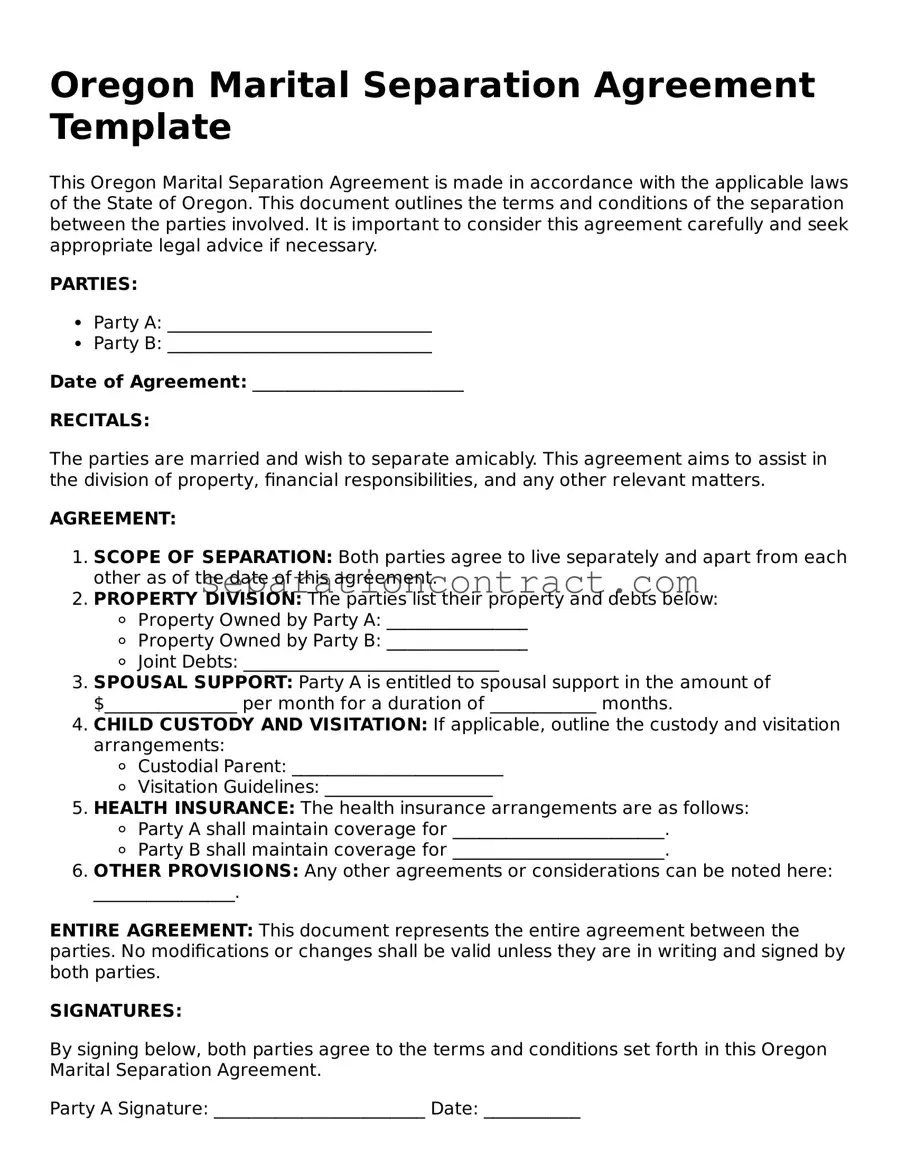When completing the Oregon Marital Separation Agreement form, individuals often make several common mistakes that can lead to complications later on. One frequent error is failing to provide complete and accurate information. Incomplete sections can delay the processing of the agreement and may lead to misunderstandings between parties.
Another mistake involves not understanding the implications of the terms being agreed upon. People may agree to terms without fully comprehending their long-term effects, especially regarding property division and child custody. It is crucial to consider how these decisions will impact future living arrangements and financial responsibilities.
Additionally, some individuals neglect to include all assets and debts in the agreement. Omitting significant items can create legal issues down the line. Both parties should conduct a thorough inventory of their assets and liabilities to ensure everything is accounted for in the agreement.
Failing to consult with a legal professional is another common oversight. While it is possible to fill out the form independently, seeking legal advice can provide clarity and help avoid potential pitfalls. A lawyer can offer insights into the legal ramifications of the agreement and ensure that all necessary provisions are included.
Moreover, many people overlook the importance of ensuring that both parties sign the agreement. Without proper signatures, the document may not be enforceable. It is essential to confirm that all required parties have signed and dated the agreement before submitting it.
Lastly, individuals sometimes forget to keep copies of the completed agreement. Retaining a copy is vital for reference in the future. This ensures that both parties have access to the terms agreed upon and can refer back to them if disputes arise.
